Smart Ways to Store Firewood: From Wood Sheds to Stacks
Discover the best ways to store firewood. From sheds to traditional stacks, find the perfect firewood storage solution for your homestead.
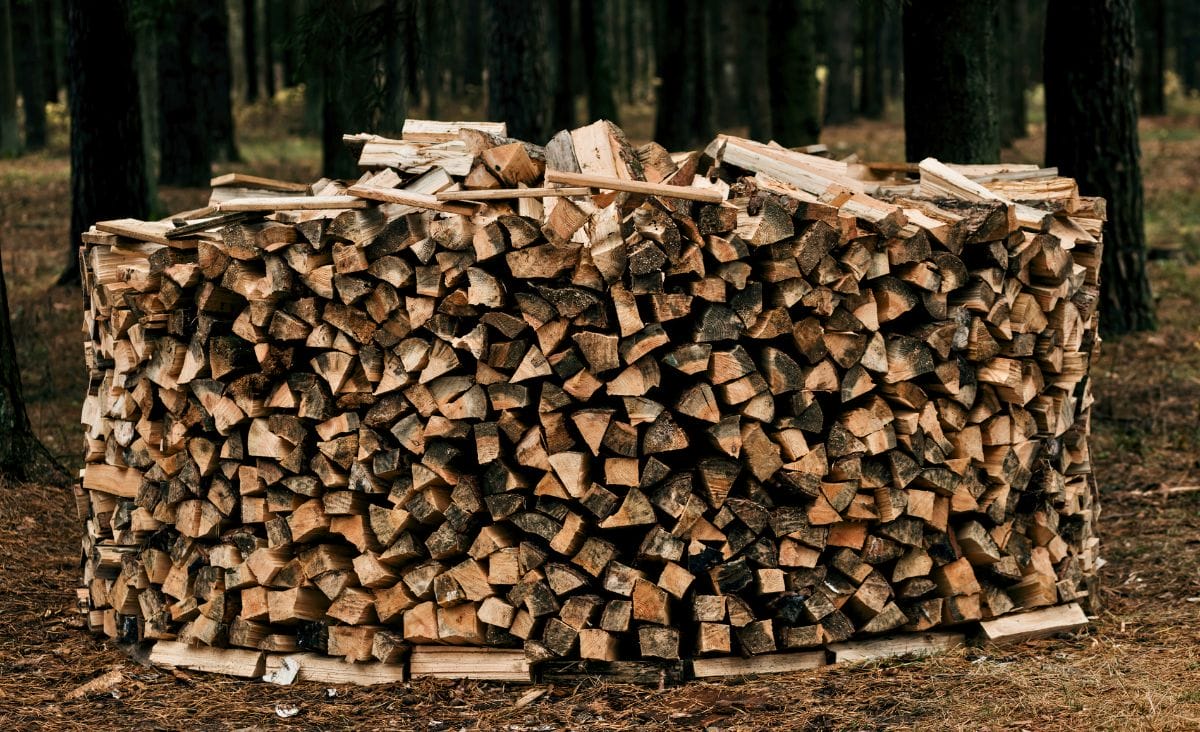
Having a lot of well-stored firewood on hand is very important as the weather gets cooler. Find out how to store firewood properly so you can have a cozy winter.
If you’re curious about the ideal firewood for your stove or fireplace, ways to snag free firewood, or maintaining that clear stove glass, I’ve got you covered. Let us look at some useful and practical ways to manage your firewood to keep your homestead warm and cozy.
It is important to store firewood so that it stays dry and is ready to burn. Here are several popular methods for wood storage.
Wood Sheds
A wood shed is a dedicated structure designed for storing firewood. Typically open-sided or with ventilation, it provides protection from the elements while allowing proper airflow to season the wood.
This is the technique we use to store our firewood for the current season.
Advantages: Shields wood from the elements, promotes air circulation, and offers convenient access.
Disadvantages: Despite its protective qualities, a wood shed may limit airflow compared to open stacking, potentially slowing the drying process. Additionally, the initial cost of constructing a shed can be higher than with simpler storage methods.
Traditional Stacks
To build a traditional firewood stack, start with a flat, well-drained base. We use pallets. Stack the wood on the ends in a crisscross or log cabin pattern, creating stability, and then fill in the space in between. Make sure the stack is compact but not too tight, and cover the top with a tarp to protect against the weather.
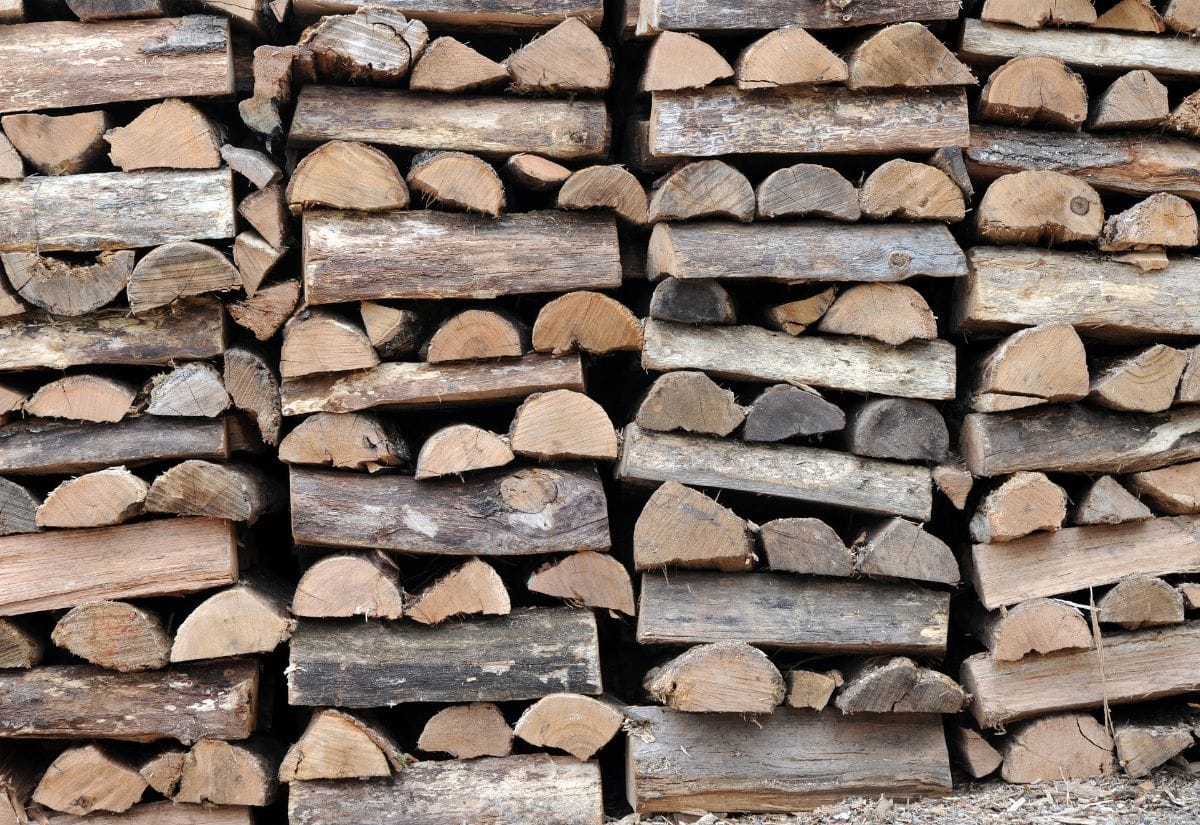
Advantages: Simple and cost-effective, allows for air circulation, and suits smaller quantities.
Disadvantages: Traditional stacks are vulnerable to the elements, exposing the wood to rain and snow. This lack of protection can increase the risk of mold, decay, and a longer drying time.
A Holzhausen
A holzhausen is a circular firewood stack that resembles a beehive. Logs are strategically arranged in a radial pattern, creating a self-supporting structure that allows for efficient drying and optimal air circulation. The unique design also provides stability and protection against the elements.
This is the technique we use to season our firewood in the field. This tutorial makes it easy to understand the technique.
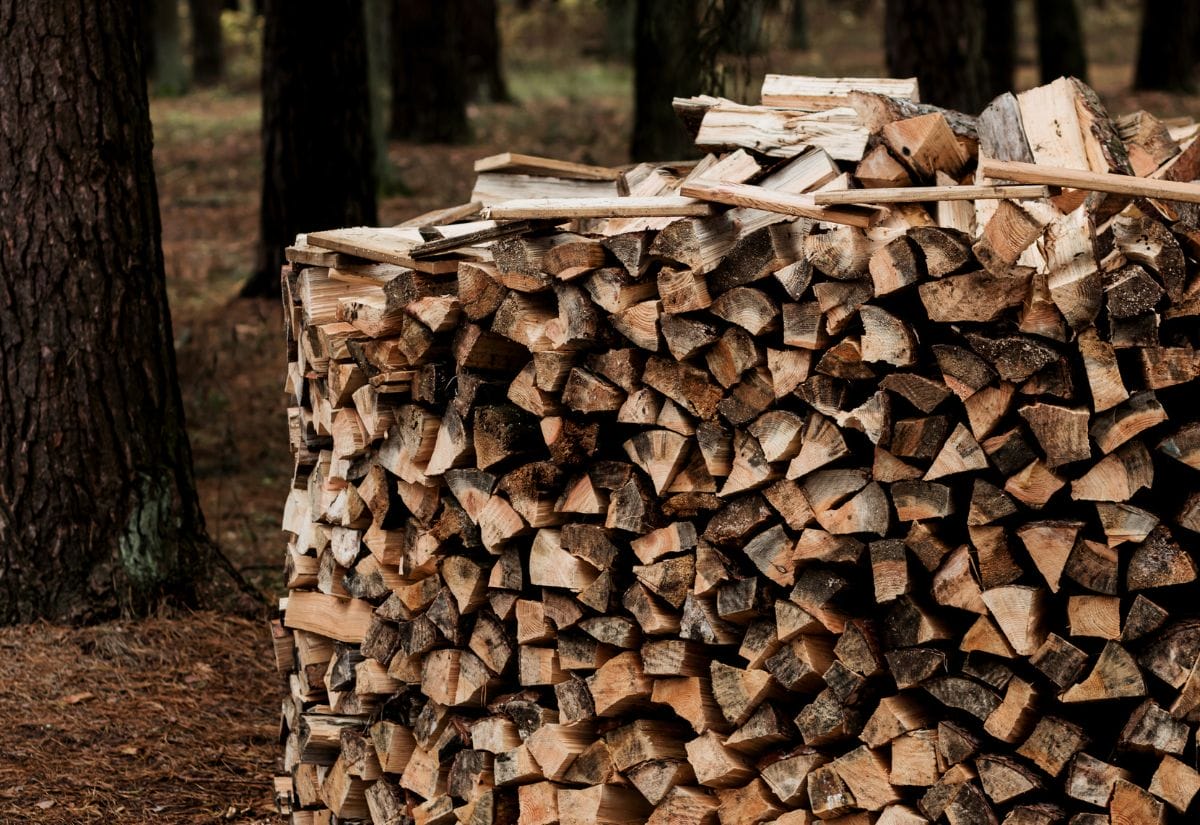
Advantages: Enhances stability, promotes drying, and adds an artistic touch to your wood storage.
Disadvantages: Despite their protective design, a holzhausen can take a while to build and may require more space than a traditional stack. We calculated that our 4-pallet-sized holzhausen holds about 1/2 cord.
Wood Piles with Raised Bases
This method helps prevent ground contact, reduces moisture absorption, and promotes better air circulation for drying. The raised base helps protect the firewood pile from soil moisture and pests, providing a more effective and efficient way to store firewood.
TIP: I’ve discovered that small piles of wood on pallets dry much faster than a large pile on the ground. If you don’t have time to create wood stacks, this is an easy solution.
Advantages: Minimizes rot, discourages pests, and helps maintain the quality of the wood.
Disadvantages: This method may still expose wood to some moisture, especially in heavy rain. It requires additional construction for the raised base, adding a layer of complexity and cost to the wood storage solution.
Wood Cribs or Racks
A wood crib, or rack, is a method of stacking firewood in a square or rectangular structure with open sides. This design allows for improved airflow, aiding in the seasoning process by promoting faster and more thorough wood drying.
The crib or rack style offers easy access to firewood and is a popular choice for those seeking efficient and organized firewood storage.
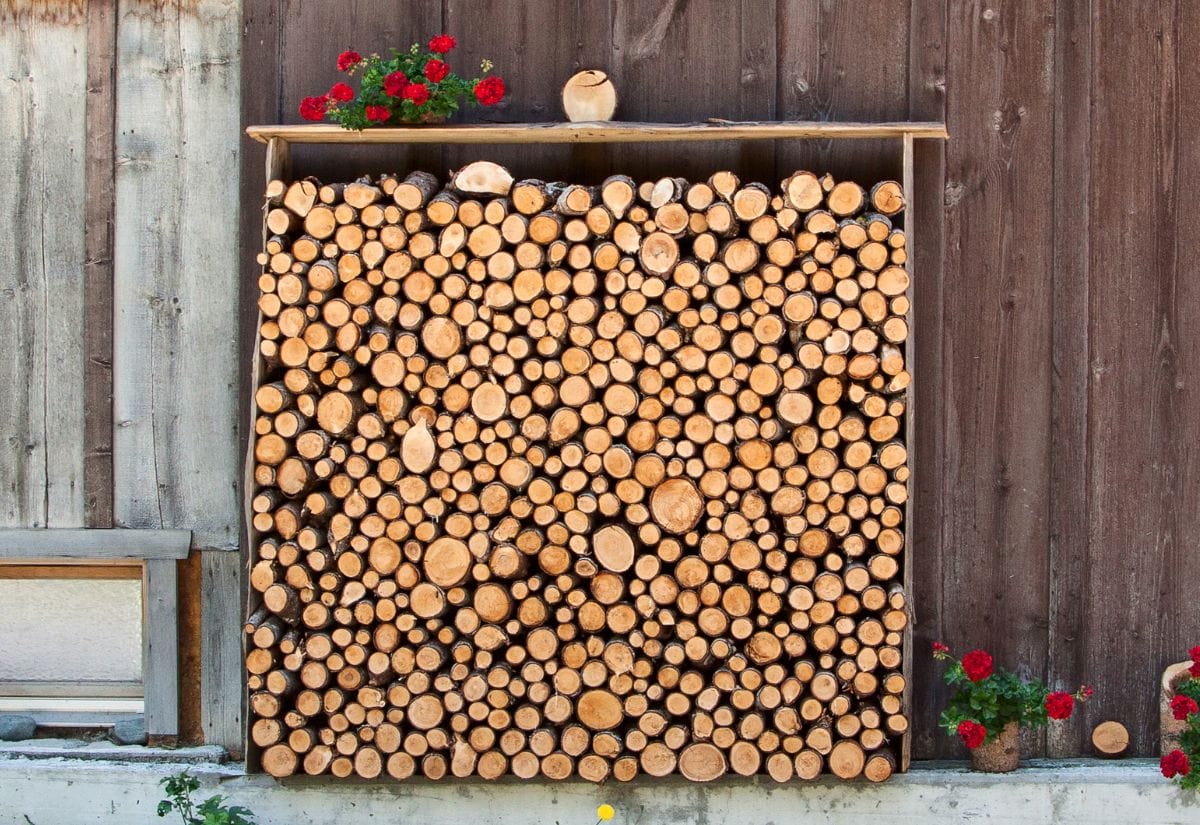
Advantages: Enhances stability, facilitates organization, and can be adjusted based on available space.
Disadvantages: Despite these benefits, cribs can be labor-intensive to build and may not be as space-efficient as other storage methods. Additionally, they might not provide complete protection from the elements, leaving wood vulnerable to moisture.
Wood Bins or Containers
Wood bins or containers are enclosed structures designed for storing firewood. Typically made of materials like metal or wood, they provide protection from the elements, keeping the firewood dry and ready for use. These containers usually have holes or slats in them for airflow, which lets the wood season properly.
Wood bins are a convenient and organized solution for storing firewood, preventing it from scattering and maintaining a neat appearance in your homestead.
Water-tote cages work great for storing wood!
Advantages: Provides a neat and organized storage solution, is easy to manage, and protects wood from the elements.
Disadvantages: These structures may not offer optimal ventilation for proper wood seasoning. Additionally, they might require additional space, and if not elevated, they can be susceptible to ground moisture.
Every method has pros and cons, and the one you choose will depend on things like space, personal taste, and the amount of wood you want to store.
Frequently Asked Questions
Here are answers to some of the frequently asked questions my readers have about storing firewood.
You may also enjoy reading these other firewood and wood burning posts: Can You Use Pine Firewood Indoors? Dispelling the Myths, Increase the Efficiency of Your Stove with Heat-Powered Fans, and 5 Factors to Consider When Buying a Wood Stove for Your Home.
If you’ve found value in this blog post and enjoyed reading it, why not share it with your Pinterest community? Pin the image below and spread the love!
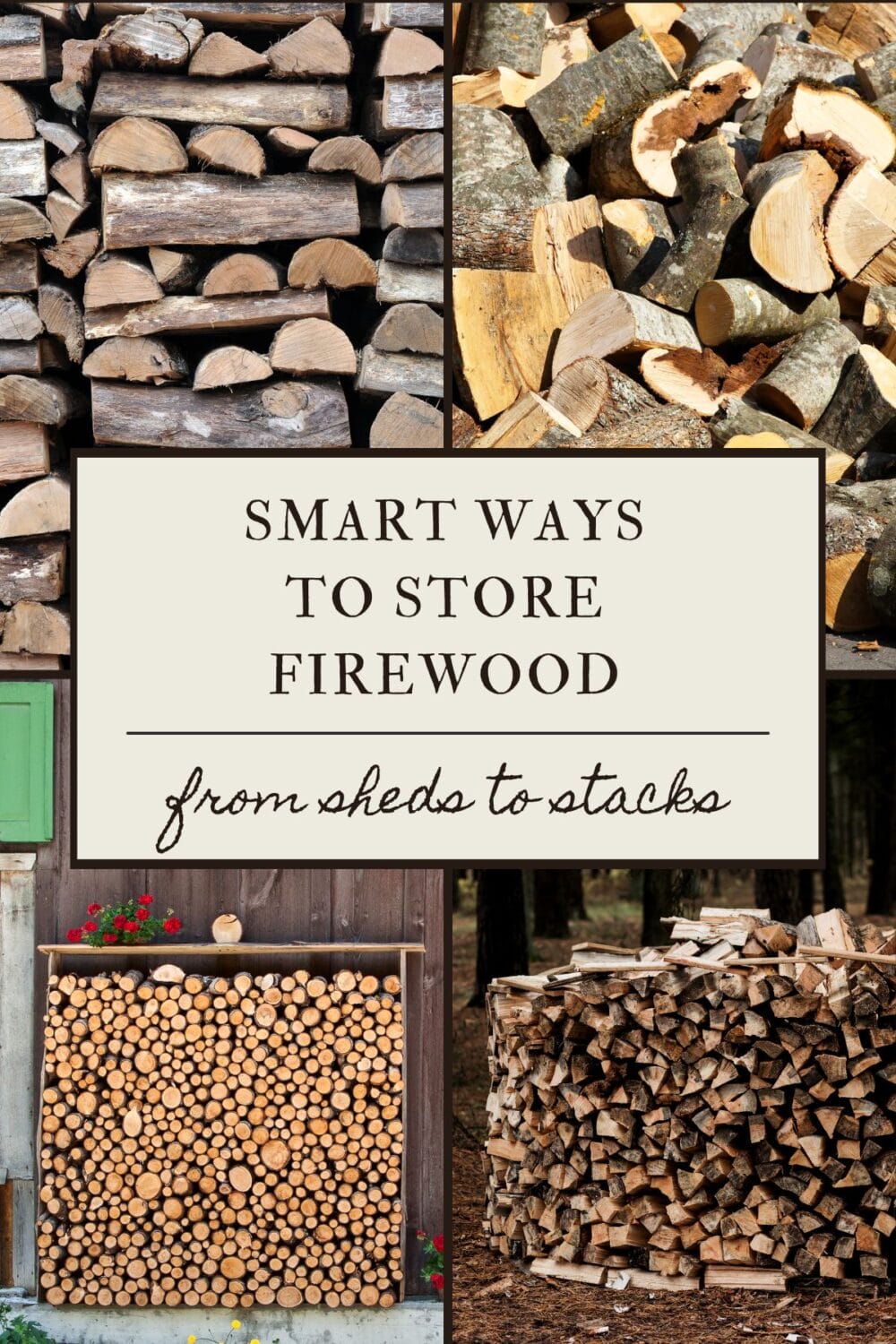
When storing firewood for your homestead, it is important to remember that the right method is what will keep your wood supply reliable and efficient. The goal is to keep your firewood dry, well-ventilated, and easy to get to, whether you store it in a wood shed, traditional stacks, or some other way. With these storage ideas, you can keep your home warm and cozy all through the colder months.
Which firewood storage method resonates with your homestead, and do you have any additional tips to share?
